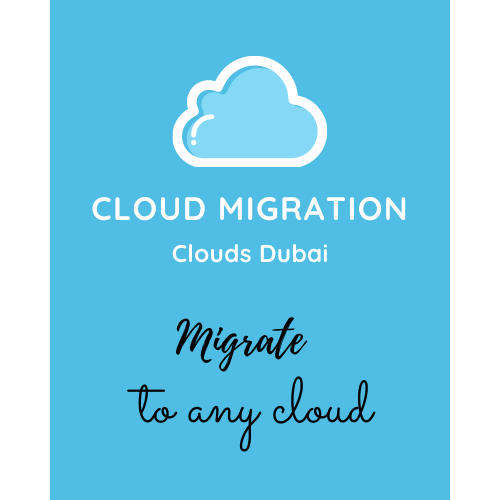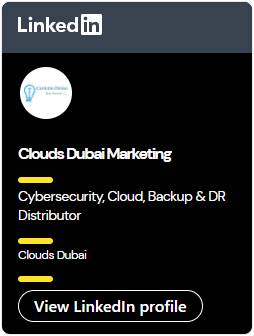Cloud Migration
Cloud migration is the process of moving data, applications, or workloads to a cloud computing environment. You can move all your infrastructure or some applications and services to the cloud. There are different types of cloud migrations that an organization can opt for. It can be the transfer of data and applications from an on-premises data center to the cloud. It can also be moving data and applications from one cloud platform to another provider.
We help customers move their existing applications, workloads, and services from their existing Data Centres to the cloud, or from one cloud provider to another. The objective of a cloud migration service is to seamlessly migrate the existing infrastructure of the customer to the cloud which will significantly reduce the total cost of ownership and increase performance. The key objective of our cloud migration exercise is to keep the downtime minimal with lift and shift during migration by making sure that we follow security and compliance best practices.
We help organizations to move their on-premise infrastructure to any cloud platform including private, public, or hybrid cloud. An optimal cloud strategy provides businesses with greater flexibility by moving workloads between cloud solutions as needs and costs fluctuate. The cloud platforms where our team has expertise in migrating data to the cloud are given below.
> Amazon Web Service (AWS)
> Microsoft Azure
> Google Cloud Platform
> IBM Cloud Services
> VMware
> Rackspace
> Red Hat
> Oracle Cloud
> SAP
> Wasabi
Benefits of Cloud Migration
Cloud Migration is the process of partly or completely moving your digital assets, services, data, and applications within your network to being hosted on a secure cloud-based environment. Migrating your business to the cloud offers better scalability, reliability, and redundancy. It also offers the added benefit of increased availability and provisioning of your assets and applications across your entire organization from any location. The benefit of cloud migration is to move the applications and data in the most cost-effective IT environment with better performance and security.
We follow the best practices in Cloud Migration and we can help you to migrate to any third-party clouds, either public cloud, private cloud, multi-cloud, or hybrid cloud as we are cloud vendor agnostic. Our team comes up with a cloud migration strategy to identify the most cost-effective cloud offering based on the client’s requirements. The cloud model that we select depends on the cloud environment and the type of data involved.
The steps we follow during a cloud migration assessment vary based on factors such as the type of migration required and the specific resources required for the project to move to the cloud. We also help customers with migration planning & secure migration thereby making sure that your instances on the cloud are secure from hackers.
Cloud Migration Process & Steps
A recent report from Cloud Security Alliance suggests that a majority of Cloud Migration projects have experienced failure or disruptions due to a lack of planning and complexity involved in moving to the cloud. Migrating applications from on-premises environments to the cloud without proper planning can be expensive and troublesome, resulting in work interruptions, performance issues, and security loopholes. A lot of organizations end up in trouble by moving to the cloud without following proper processes and steps. Given below are the steps that we follow for successful Cloud migration.
1. List down the purpose of moving to the Cloud
2. Evaluate migration costs and needs
3. Assess the existing applications and environment
4. Decide the deployment model (IaaS, Baas, PaaS, SaaS, etc.)
5. Select the right Cloud Vendor considering data residency requirements
6. Get the application Cloud-ready
7. Choose the right architecture
8. Prioritize migration components with performance baselines
9. Migrate data and applications
10. Test applications, databases, and other components
11. Conduct VAPT to ensure that the cloud environment is secure
Challenges of Cloud Migration
Cloud Migration comes with its own share of challenges and the same needs to be analyzed in detail before moving ahead with cloud migration. The majority of Cloud migrations fail to achieve the initial objectives due to the challenges faced. The major challenges are:
> Lack of senior management buy-in
> Understanding of hidden costs involved
> Visibility & control over the stages of migration
> Cloud Security getting overlooked
> Lack of cloud expertise or skills
Request a quote for Cloud Migration
Cloud Optimization
The cloud offers unlimited scalability and lowers IT costs for organizations by only charging for the resources they use. But the truth about most of the popular cloud services is that the customers are charged for the resources they order irrespective of whether they use them or not. In a recent Gartner report, analysts Brandon Medford and Craig Lowery estimate that as much as 70% of cloud costs are wasted. Fortunately, there are best practices available for cloud cost optimization. We provide specialized cloud optimization services. Cloud optimization is the process of reducing your overall cloud spend by identifying mismanaged resources, eliminating waste, reserving capacity for higher discounts, and right-sizing computing services to scale.
We make sure that our customers are secure and cost-optimized using better cloud and infrastructure planning and adaptation. Our team has experience with cloud migration and cloud optimization for all major cloud service providers like AWS, Azure, Google, Digital Ocean, Rackspace & Alibaba
The Cloud Optimization process consists of 3 stages.
Non-Intrusive Analysis:- Unlike any other service provider, we don’t ask for access at any level to your existing environment – be it for cloud optimization or On-Prem to cloud migration. Instead what we require is the following:-
- For Cloud – We require the last 2 or 3 month’s billing details for your existing cloud. Based on this information we will let the customer know the level of optimization that we can provide.
- For On-Prem -We ask for the physical and logical network diagram of the customer. This should include the current sizing and load of the existing hardware.
Re-Architecting the Solution:- This is the stage where our team will create a draft of the proposed solution with the approximate cost savings and present it to the customer. Customers can evaluate and decide if they want to move to the next phase.
Implementation:- Our team will fine-tune the Cloud architecture to come up with a low-level architecture diagram. Once the HLD and LLD are approved, we start the real-time implementation process. The strategy for implementation is generally done using the Blue-Green-Model so that the downtime can be kept either to zero or near zero. Once the implementation is over, we monitor the setup for at least a month for usage patterns to help adjust the autoscale policies and reserved Instances.



